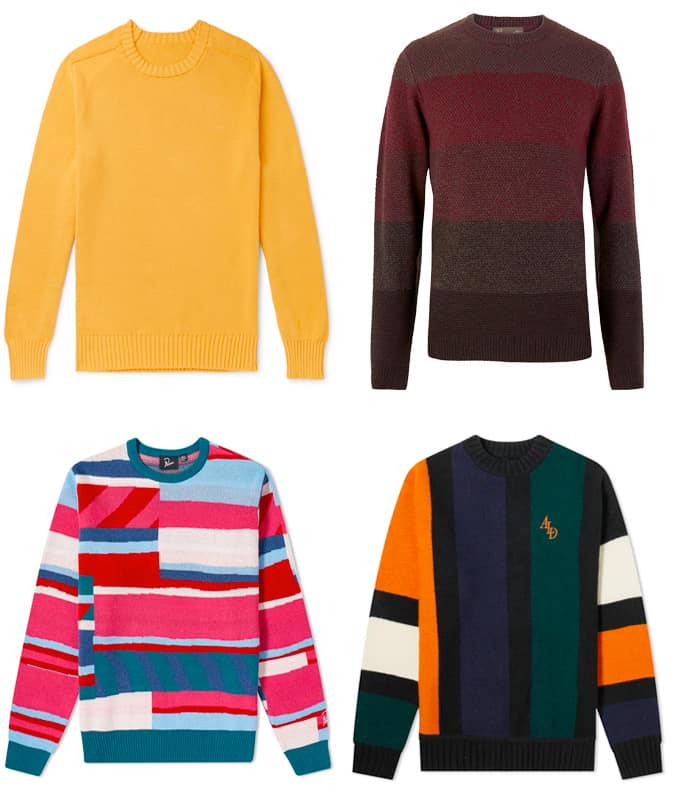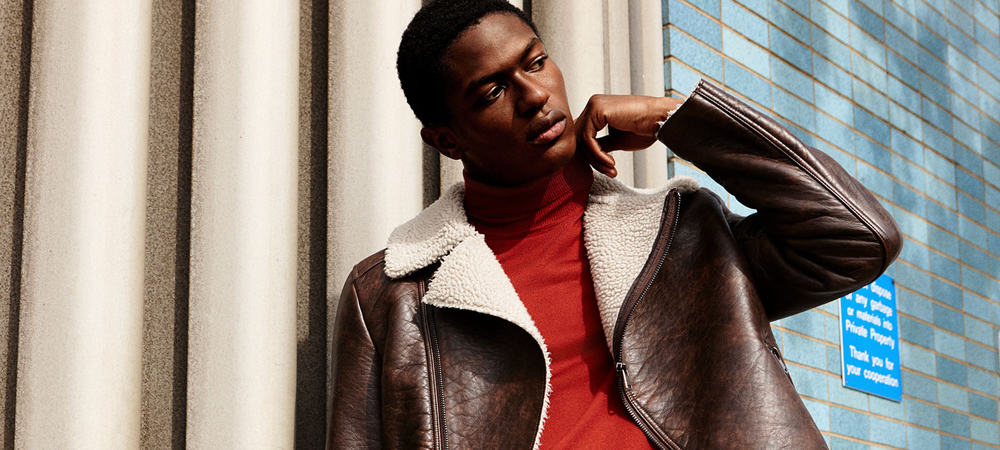Let’s get one thing straight: you don’t have to obsess about colour. No one is going to judge you for wearing last season’s shade of russet instead of this season’s shade of smokey topaz. If they do, they deserve to be slapped a shade of 2015’s Marsala red.
As long as you follow the obvious advice – dress for the occasion, stick to shades that suit your skin tone and pick hues that don’t clash – you’re golden. Sorry, Pantone Nugget Haze 16-0952.
That said, a tweak to your usual colour wheel is the easiest way to light up dull outfits, particularly in winter – a time when the temptation is to stay in the warm cocoon of navy, black and grey. “With any hue that sits outside the safe spectrum – black, navy, grey and white – it’s easiest to ground an outfit by keeping to one bright piece in your look,” says River Island design manager Matt Braun.
Not keen on wide-leg trousers? Think track tops and joggers should stay in the gym? Then let a new hue be the trick that refreshes your wardrobe. Here’s everything you need to know about wearing colour this winter.
How To Wear Colour In Winter: Key Tips
Know Your Skin Tone
Finding the right colour for your skin tone basically boils down to understanding your complexion. First, look at your forearm. Is it fair? Then stick to darker colours and avoid anything too pale. Olive? Chuck out anything yellow or green that is too close to your skin, but otherwise, go wild. Dark? Well, dear friend, the world’s your oyster (chromatically speaking).
“The darker your skin tone, the easier it is to pull off bright colours,” says Rich Simmons, a stylist at the online service Stitch Fix. “But remember, none of these rules is hard and fast. I would always advise trying pieces that are outside of your comfort zone in the relative safety of your home, where the lighting is more natural.”
Coordinate With Care
As a general rule, brighter colours tend to pop more when placed next to black or white, which means that you might want to think twice before throwing on your everyday black jeans.
Instead, try a pair of navy or grey trousers or dark selvedge denim, which will create a softer contrast with more vibrant hues. “The darker the shade, the more your brighter colour choices will stand out,” says Simmons.
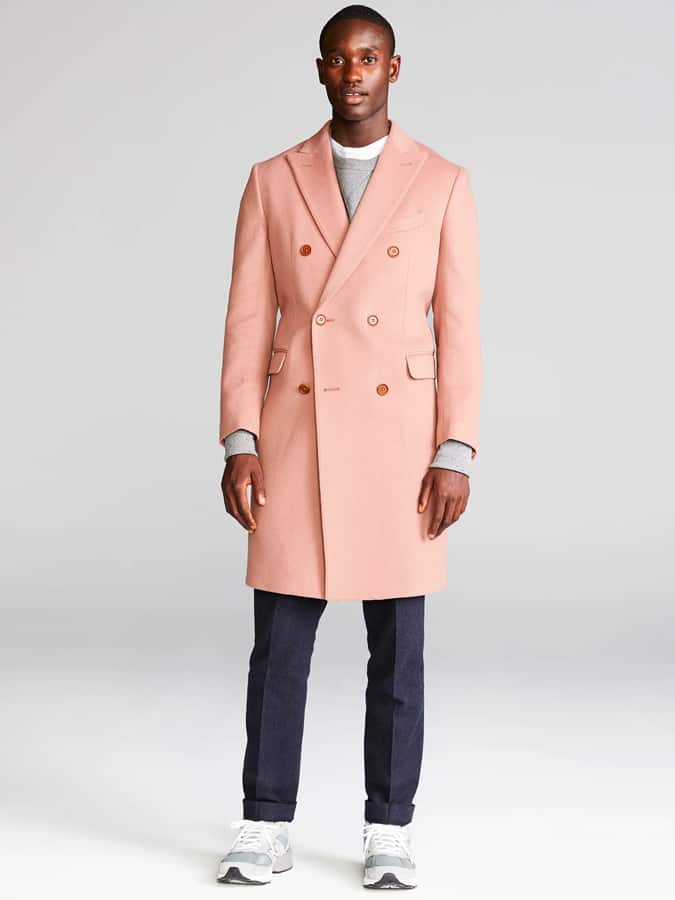 Todd Snyder
Todd Snyder
Material Matters
Getting colour right is about substance as much as it is appearance. “Manmade materials [such as polyester or acrylic] take colour and print better and make for a more vivid appearance,” explains ASOS head of menswear design Nick Eley.
But, louder isn’t always better. Natural fibres like cotton and wool appear less harsh once dyed, especially those with a textured finish, which can add depth that softens the overall effect.
Dress For The Season
By which we don’t just mean packing away the shorts come winter. As nights grow darker, so too should your wardrobe. Granted, advanced dressers can get away with sunshine yellow in September, but a far easier, entry-level move is to opt for a more subdued palette.
“Deeper, richer hues of your favourite colours are a great go-to for autumn/winter,” says John Lewis menswear stylist Promise Bakare. “For example, if red is one of your summer faves, burgundy is a great colour to transition to.”
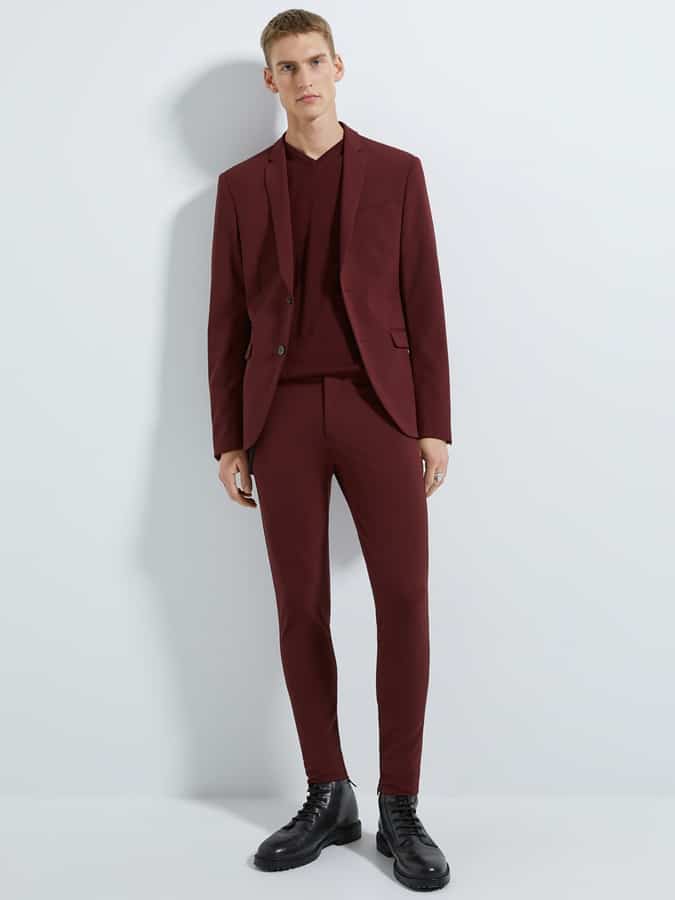 Zara
Zara
Start Small
“As a fan of the ‘all black, everything’ look, I can relate to the challenge of bringing colour into an otherwise monochrome wardrobe,” says Simmons. “If you want to jump-start your palette, bring in flashes of colour through your shoes, accessories or outer layers.”
Though khaki or mustard might not be for everyone, a medium brown or camel coat is universally elegant, while colourful sneakers can lift any outfit without affecting your overall complexion.
3 Ways To Wear Colour In Winter
Smart
Between office Christmas parties, winter weddings and overpriced New Years’ Eve dos, the colder months aren’t short of occasions to dress up for. And while you could dust off the old faithful two-piece, isn’t it already dull enough outside?
Why not lift your surroundings with a suit in bottle green or burgundy – rich, deep hues which read as inherently smart. Stick to a white shirt and dark tie or, if the dress code permits, a charcoal roll neck. A slightly clashing pocket square or a bold pair of socks are nice ways to throw even more colour into the mix, just avoid anything that could be described as even remotely festive.
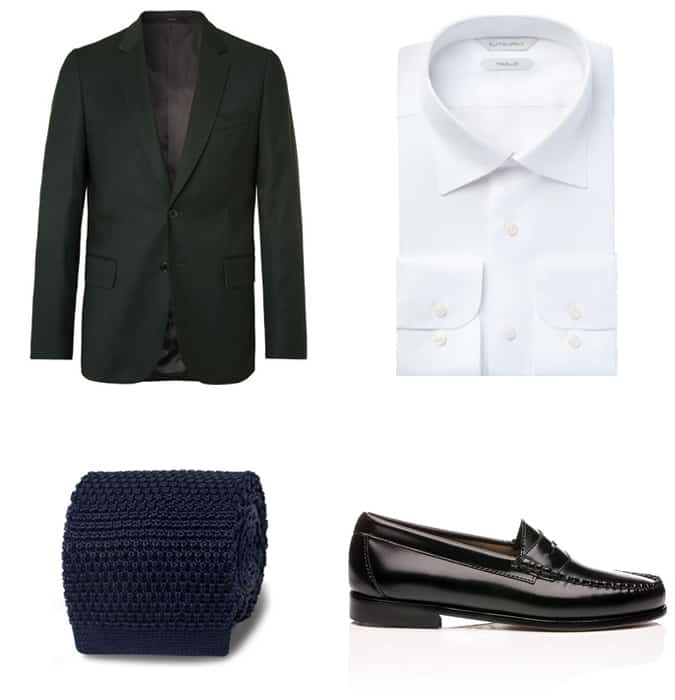
Smart-Casual
Smart-casual is more about a state of mind than it is a rigorously enforced dress code. In most situations, a sweatshirt, trousers and a pair of sneakers will pass if worn with the right attitude. This means choosing a respectable colour for your top half – think royal blue or burnt orange, ideally without any logos or graphic prints – and a classic shade for your bottom half, such as navy or grey.
If the occasion is on the smarter end of smart-casual (or indeed its close relative, business-casual), swap the sweater out for more dressed up merino jumper in the same hue, and wear over a tonally-matched shirt (blue with blue, lilac with purple).
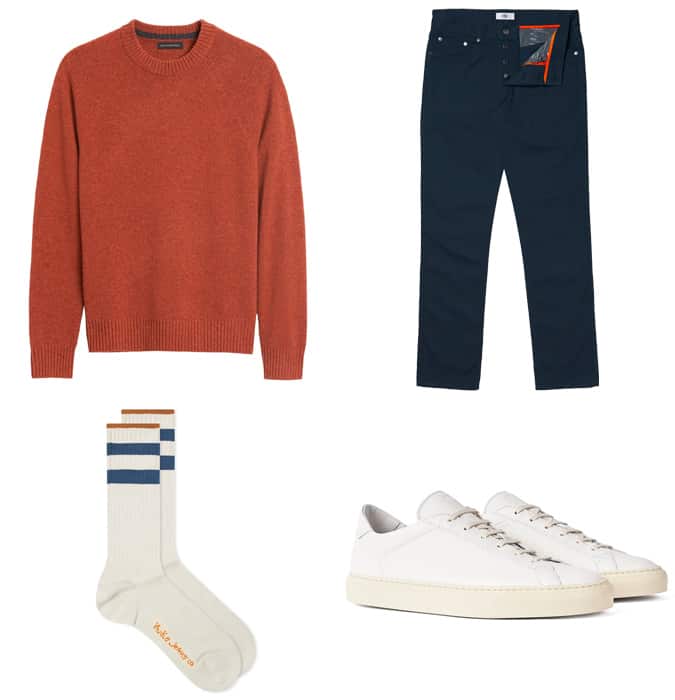
Casual
Once you’re an adult and snow days stop becoming a thing, the best thing about winter is that it gives you free license to go full-on cosy boy with heavy-gauge knitwear, sweats, and best of all, fleece. Teddy bear wares have made a big comeback as part of the ongoing ’90s revival, and are a great way of brightening up your wardrobe (and did we mention, cosy AF?).
Try wearing a colour-blocked zip-through in earthy shades with washed-out denim, or a pair of thick chinos cuffed over colourful hiking sneakers.
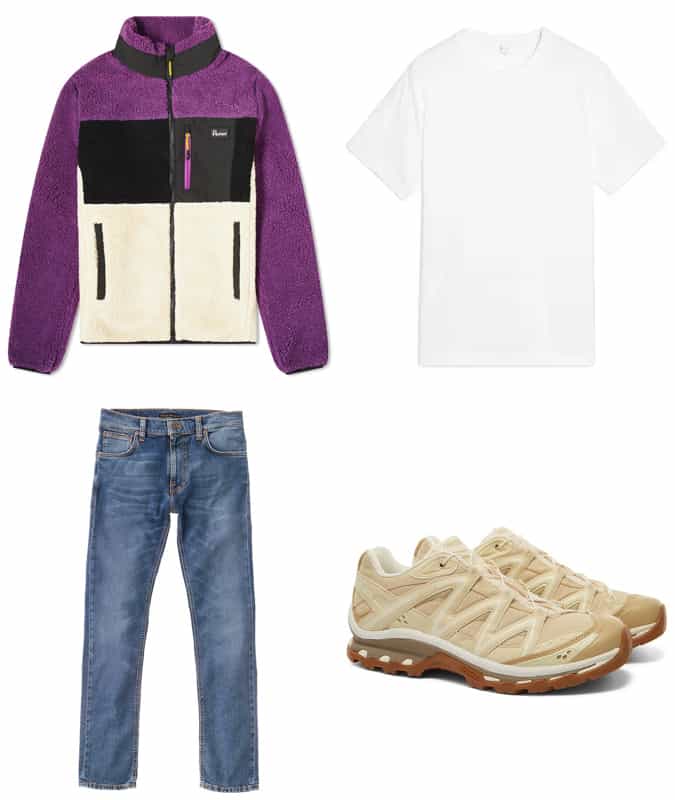
6 Key Winter Colours
Burnt Orange
There was a time when metallics made noise on the runways, but in recent seasons it’s what doesn’t glitter that’s wardrobe gold.
From the high-end to the high-street, designers have mined shades of copper and burnt orange for precious pieces, forging them into top-to-toe looks and statement outerwear.
This rich shade was struck from the same archives as the move to wide trousers and wider lapels. “An interest in 1970s trends has been sweeping catwalks,” says Braun. “With the cuts and the corduroy come the rusts and coppers.”
Helpfully, style observers have described burnt orange as a “new neutral”, which means it works well with winter’s default tones of black, navy, grey and white. Keep your eyes peeled for anything made of wool especially, which gives the shade extra depth.
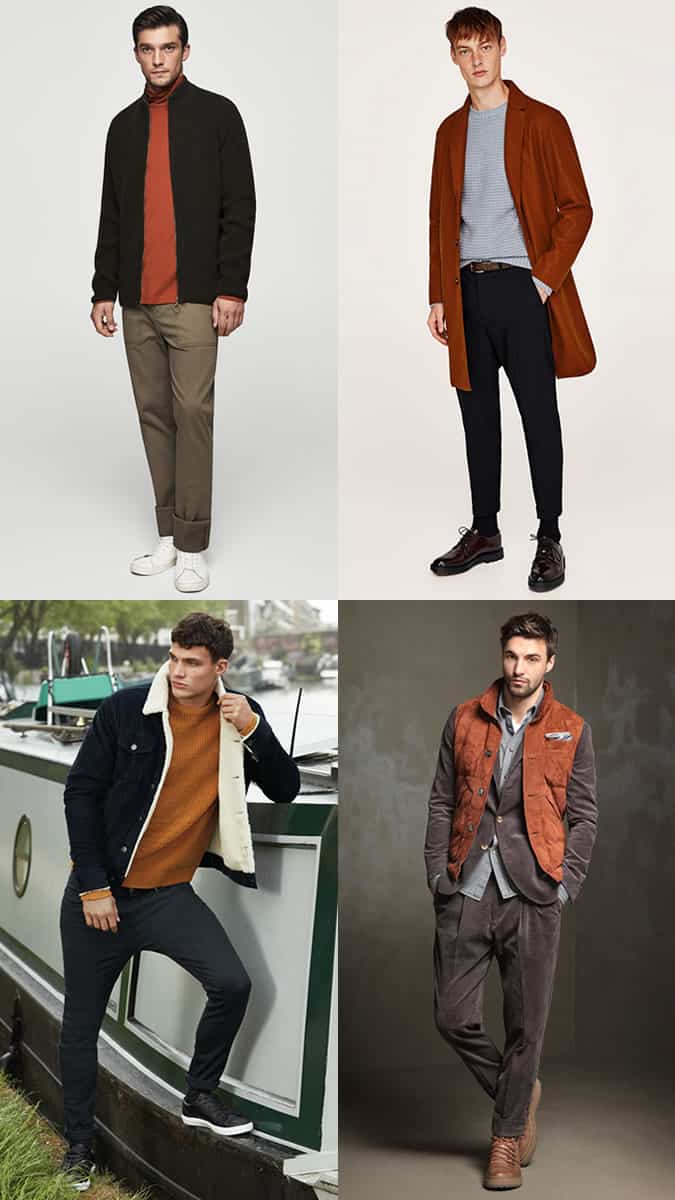
Military Greens
Green is a winter perennial, and most men’s ‘other’ neutral when they tire of black and blue.
“Green has rippled through collections so much that you’d be forgiven for thinking there was some covert designer WhatsApp group,” says Chris Hobbs, style editor at MatchesFashion. “Khaki seems to be the easiest way to wear the trend, and it’s pretty neutral, too.”
How do you wear it? Think surplus chic. “Khaki tailored trousers are a winning pairing with other muted shades of tan, grey and cream, while utility trousers will work with chunky knitwear and clumpy Derby shoes,” says Hobbs.
Likewise, a bag or overcoat in an earthy tone will amp-up an otherwise monochrome look without channelling Action Man.
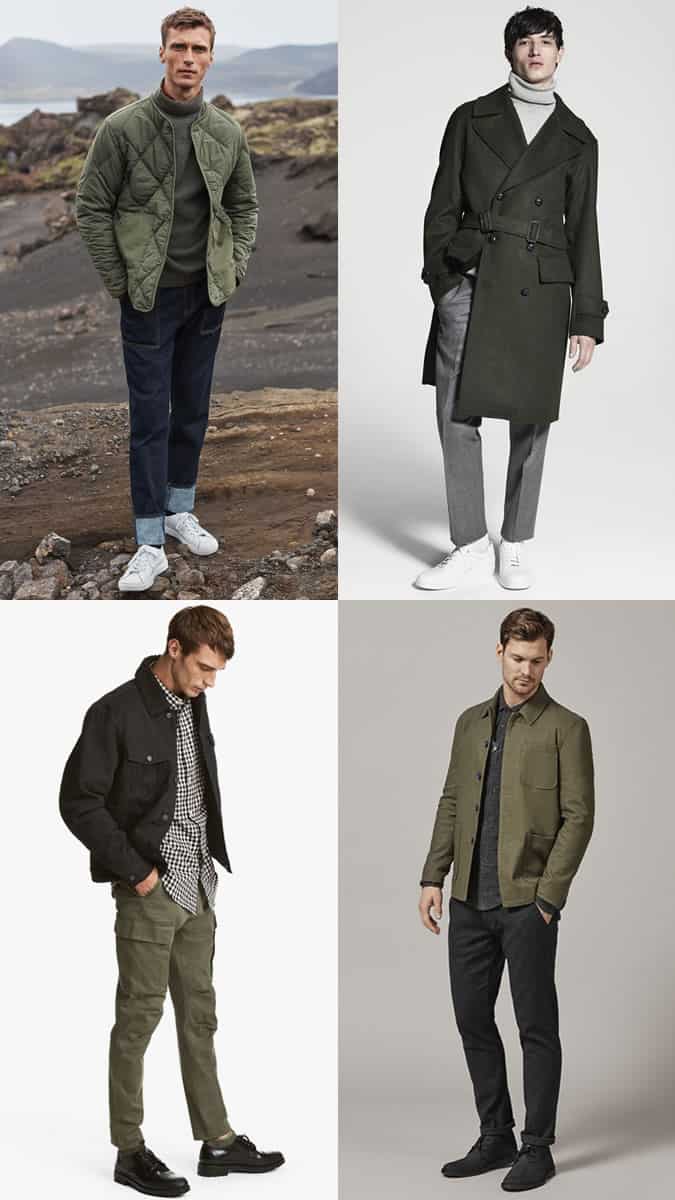
Wine
As the cold creeps in, the drink pours in. Except it won’t (just) be in your wine glass. Menswear has been picking up notes of merlot, shiraz and burgundy for autumn/winter, primarily because these warm tones pair happily with a range of other wearable colours.
“Deep, full reds are key as they add warmth and richness to your look that can translate to a premium feel,” says Joules senior menswear designer Tim Ellis. “Plus, you can find it in pieces across the board from smart jackets to overshirts.”
Everything in moderation, of course. “Wine tones should only be worn with navy or black, and perhaps a touch of grey to add a tonal look,” adds Ellis.
Think staple black jeans and a chunky knit with a wine-coloured overcoat. Or spruce up your seasonal black tie look with a burgundy dinner jacket. Chin chin.
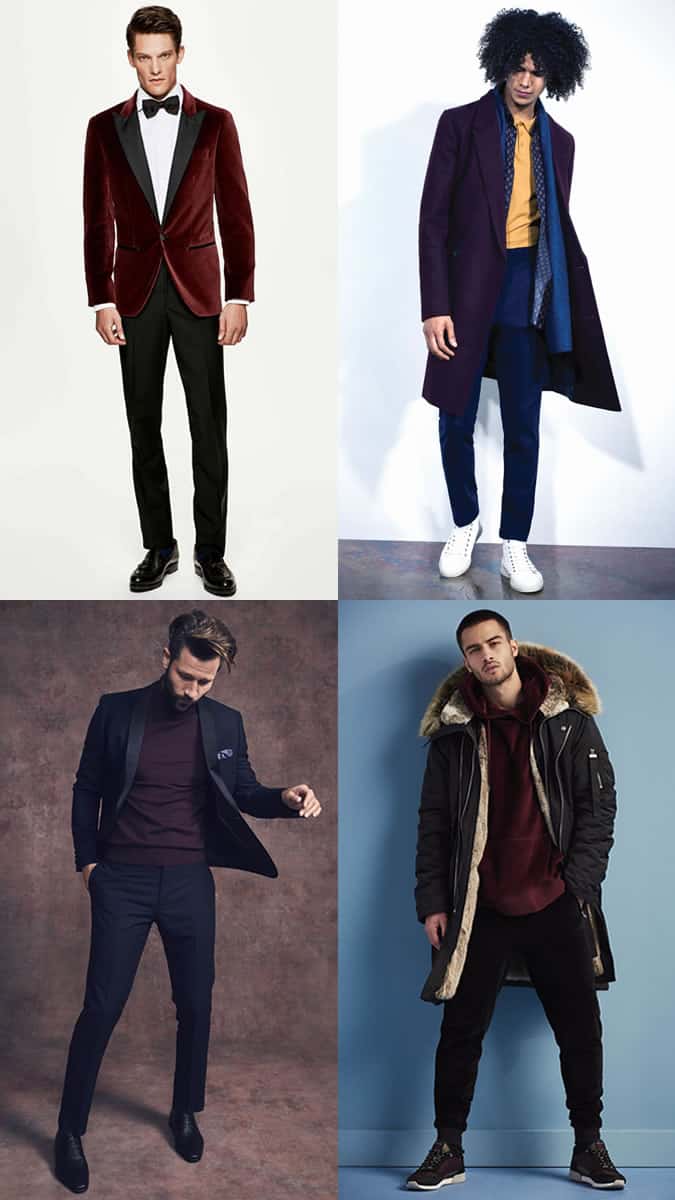
Mustard Yellow
Like the good condiment itself, think of mustard as a nice bit on the side in your wardrobe. The shade has seen a resurgence thanks to brands dipping into 1970s palettes and making them wearable in the 21st-century.
“Mustard sits well with a whole host of colours,” says Ellis. “And as a muted take on yellow, it serves to brighten the default darks of winter without looking out of season.”
While it’s not a primary colour, it’s strong enough that it’s best worn to lift an otherwise neutral outfit. “Consider indigo tones up-top when layered, or classic winter hues such as brown and earth shades below,” adds Ellis.
A sweatshirt or knit is the easiest way to incorporate mustard, both of which work with a peacoat and a pair of selvedge jeans – two menswear staples that boast a nautical vibe.

Jewel Tones
Jewel tones were once the beneficiary of party season’s disco fever, but now they’re breaking out and appearing on everything from bomber jackets to staple knitwear.
And since men feel the need to reflect grey skies in their looks, you don’t have to go all MC Hammer to make your shades stand out. Against a dark backdrop, these precious (s)tones shine.
“Jewel tones marry perfectly with earthy hues,” says Braun. The shades are at the brighter end of winter’s spectrum, so if you’re colour shy, stick to the finer details: a belt, pocket square, or even the subordinate shade on a shirt.
“The camel coat is a classic for autumn/winter. Bring it to life with an emerald green or ruby sweatshirt layered over an Oxford shirt,” he adds.
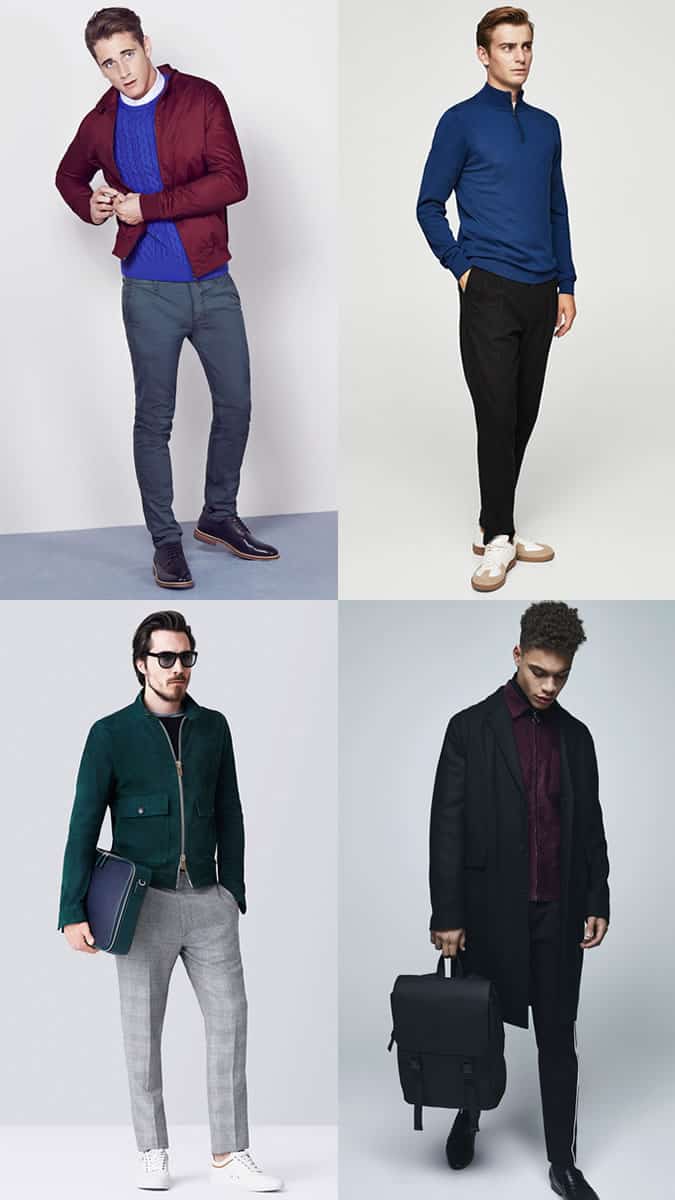
Brown
After years spent as a stuck-in-the-mud colour used only on shoes and belts, shades of brown are finally getting the airtime they deserve. Though it’s hardly the most vibrant entry on the colour wheel, it is one of the most versatile and even flattering.
“After a summer dominated by bold prints and colour, softer shades feel more seasonally appropriate and brown sits well with most skin tones,” says Mr Porter style director Olie Arnold. “Your wardrobe can encompass a variety of colours from an earth palette including tobacco, russet and chocolate to softer shades of caramel, camel and oatmeal.”
A full-brown look is challenging to pull off unless you’re a UPS driver. Creams, light greys and other neutrals are the safest partners, and it’s wise to try and upgrade the shade with some texture, too.
“Brown and textured fabrics are the best of friends, whether it’s a chunky knit, wool blazer, herringbone overcoat or suede jacket,” says Arnold. “Team with simpler pieces in cooler shades such as navy trousers or white shirt.”
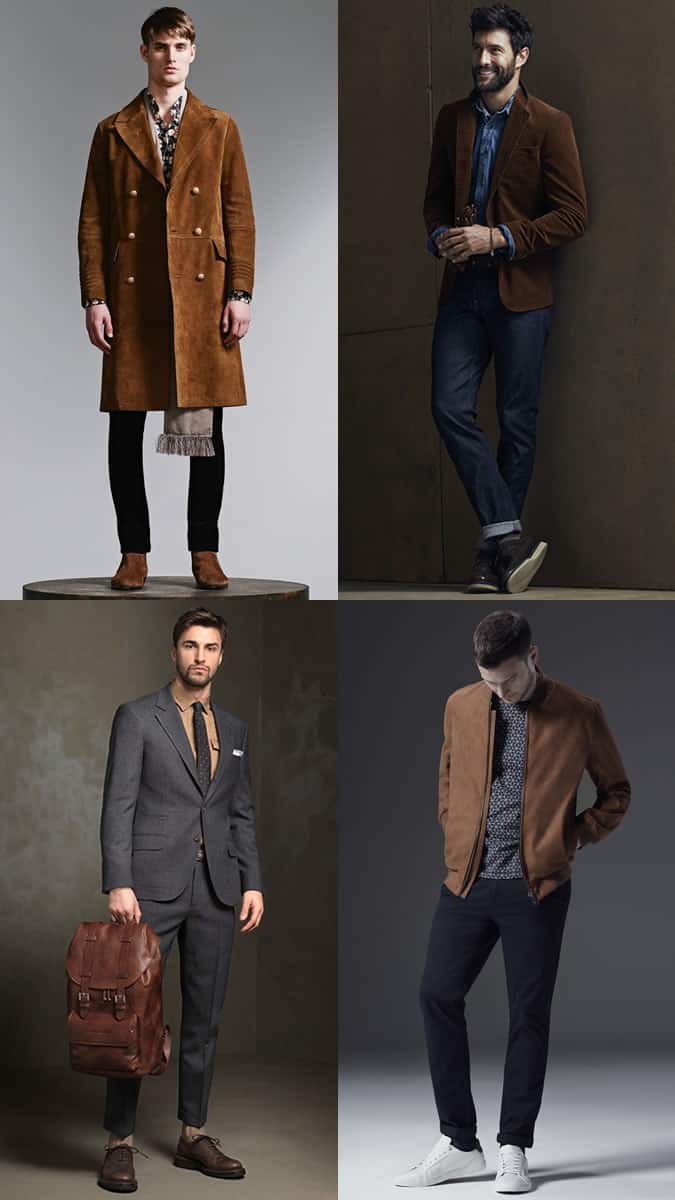
5 Pieces To Wear Colour On In Winter
Tailoring
When investing in tailoring, it’s wise to avoid anything that’s currently the “shade of the season.” Baby pink suits might be big news right now, but there’s a strong chance they’ll be in the bargain bin this time next year. Instead, choose a classic tone that will look smart for years to come, experimenting with checks, stripes and textured finishes. To temper the look, consider separates – a colourful jacket and grey trousers, or vice versa.

Accessories
Winter accessories like hats, scarves and gloves make for an easy jumping-off point when it comes to colour. Is a neon yellow beanie or deep claret scarf the most obvious choice for pairing with an all-black outfit? Not really, but that’s entirely the point. Start with one piece at a time, perhaps even a bag or some jewellery, to build up your sense of adventure.
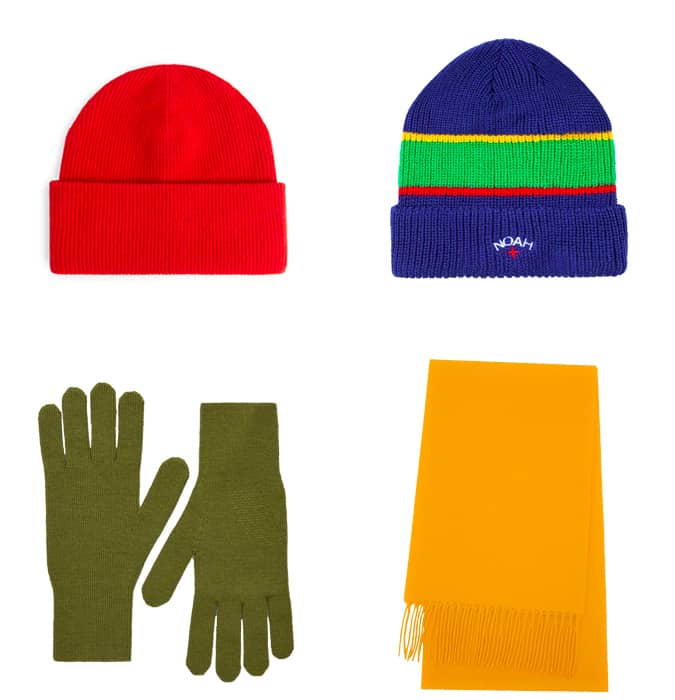
Outerwear
Camel coats are god-tier outerwear: smart, neutral-ish, but a welcome change from the usual sea of grey, black and navy. Just underneath them are khaki parkas – a little more rugged and incredibly versatile, and jewel-tone puffers – which can be worn over everything from tracksuits to an actual suit.
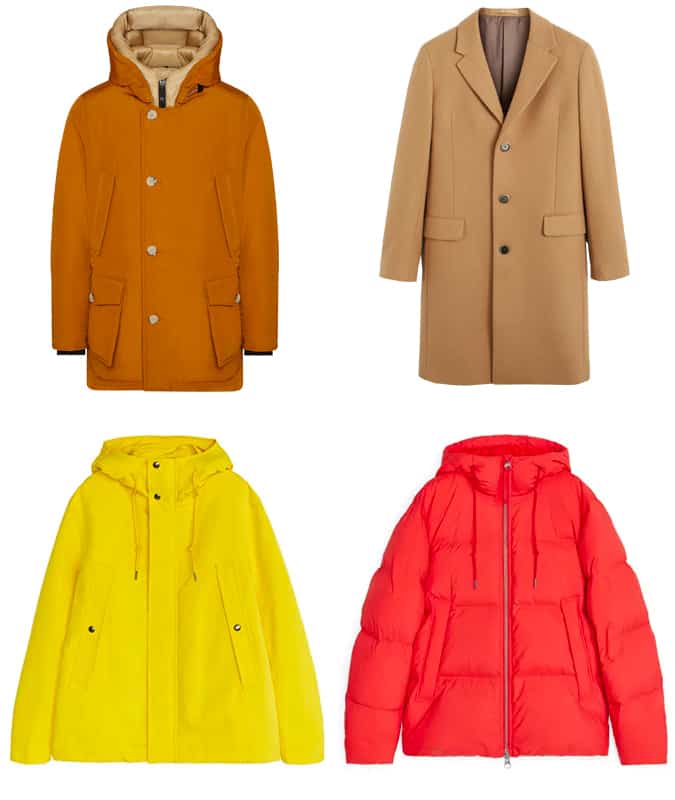
Shoes
The rules of colour matching go well and truly out of the window when it comes to footwear. It goes without saying that sneakers can – and should – be worn in every colour of the rainbow, but even in smarter situations, a pair of oxblood brogues or blue suede derbies can help lift an otherwise muted outfit.
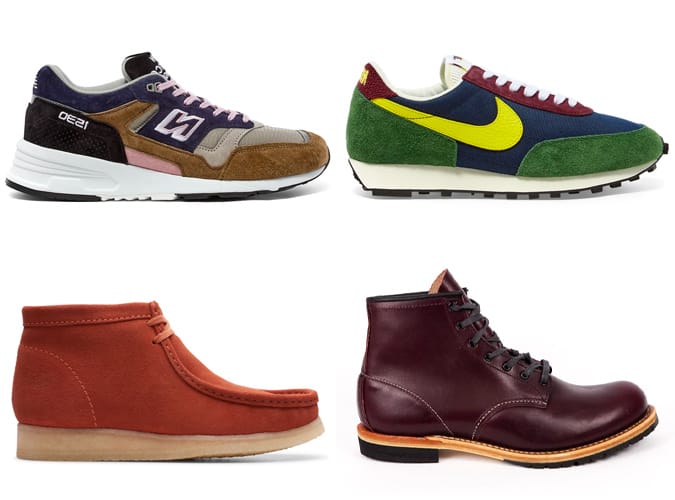
Knitwear
More is more when it comes to knitwear: as well as colour, you can also play around with textured finishes, intarsia knits and subtle flecked designs. A cashmere cable knit in soft blue or pink has a preppy feel, especially when worn with beige chinos. For a more modern look, try something with a graphic logo or geometric design.
